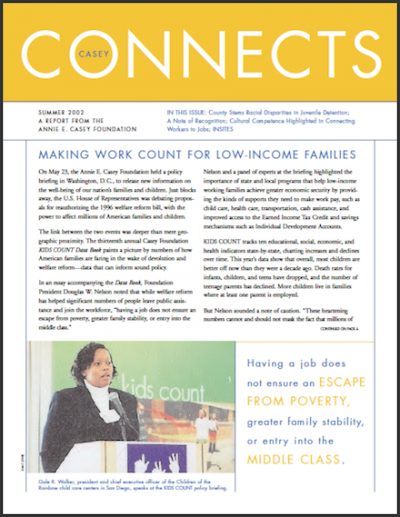Data Book Finding
More than 10 million kids live in low-income families, with parents working jobs that offer no mobility, flexibility or benefits.

This issue of Casey Connects uses KIDS COUNT Data Book statistics to examine how American families are faring in the wake of welfare reform. A second story spotlights a Juvenile Detention Alternatives Initiative site that has successfully written race and ethnicity out of the detention decision equation. Smaller stories highlight Casey-celebrated movers and shakers, the importance of cultural competence in connecting workers to jobs and lessons from the Foundation’s Rebuilding Communities Initiative.
The scene: 1990 in Multnomah County, Oregon. The statistics: Arrested Latino, Asian, black and native American youth are all more likely – sometimes up to 60% more likely – to be detained relative to their white peers. Fast forward to 2000 and 2001: Detention rates for white and minority youth arrested in Multnomah County are identical at 22%. The difference maker? A commitment to embracing – and advancing – the principles of Casey’s Juvenile Detention Alternatives Initiative.